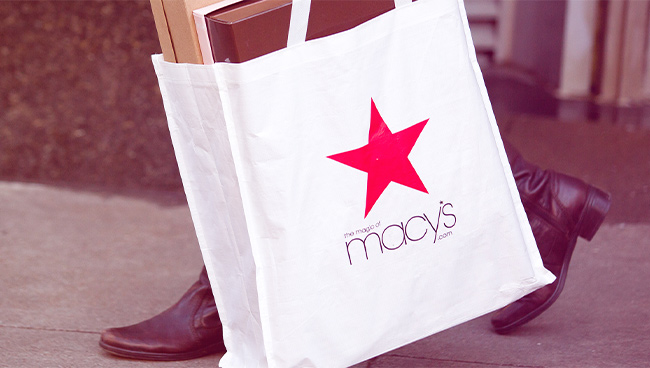BY PHIL WAHBA // Fortune, February 11, 2020
Macy’s wants to take more of its fate into its own hands.
One of the key components of the comeback plan the struggling department store company unveiled to Wall Street last week is its ambition to turn four of its long-established in-house fashion brands—I.N.C. International Concepts, Alfani, Style & Co, and Charter Club—into billion-dollar names.
The retailer, which has suffered sales declines in five of the past six years, plans to close about 125 Macy’s stores in the next three years, or 20% of its current fleet. It also has to contend with a number of major national brands like Ralph Lauren, Coach, and Levi Strauss focusing more on building their own stores as shields against the ongoing department store apocalypse.
“They just can’t say, these brands exist and put some marketing dollars behind them,” says Wendy Liebmann, CEO of consulting firm WSL Strategic Retail. “They have to assess them from scratch as if they were starting over: What do they keep? What goes away? What do they add?”
All that means that Macy’s has much more riding on its own brands than ever before. As part of its private brand reset, Macy’s junked six minor brands that had run out of steam, and will focus on the warhorses that chief executive officer Jeff Gennette says still have a lot of life in them.
“We were ready to make the decision to put some brands into the graveyard, but these four were ready to be accelerated,” Gennette, who has been at Macy’s since 1983 and CEO for nearly three years, tells Fortune.
At the investor day last week, Macy’s chief merchandising officer Patti Ongman said the goal for private label merchandise is to generate 25% of overall revenue by 2025, up from about 20% currently. Add in exclusive products from outside brands like Ralph Lauren and only-at-Macy’s merchandise would hit 40% of total sales.
Private label appeal—and challenges
When done well, private labels offer shoppers merchandise they can’t find elsewhere, giving them reason to choose one retailer over another. Add in higher profit margins thanks to the lack of an intermediary, and that retailers have more control over the production process and in-store presentation, and the lure of private labels is clear.
The textbook case of private-label success is Target’s extensive brand overhaul. Since 2017,Target has eliminated some of its biggest private label brands, including Merona and Mossimo, while adding dozens of new ones that have caught on instantly with shoppers, most notably its $2 billion Cat & Jack kids’ clothing brand. The upshot has been 11 quarters of sales growth for Target, more consumers shopping the stores, and market share gains.
But here’s the rub: private label only works if consumers want what the brand sells. Indeed, trying to rejuvenate older brands is not easy. Just ask Kohl’s and J.C. Penney. Nearly five years ago, Kohl’s said it was working with a New York branding firm to “re-energize” its billion-dollar Sonoma brand. Kohl’s does not break financial results by brand but it has since de-emphasized its own labels: private brands are behind about 39% of sales, down from 50% five years ago. Penney is also struggling to rejuvenate its business.
Adding to the challenge, sales in women’s apparel, Macy’s top category, have been sluggish industry-wide thanks to a glut of merchandise. Macy’s has its work cut out for it.
“They just can’t say, these brands exist and put some marketing dollars behind them,” says Wendy Liebmann, CEO of consulting firm WSL Strategic Retail. “They have to assess them from scratch as if they were starting over: What do they keep? What goes away? What do they add?”
Part of the problem Target faced with some of its now-defunct brands was that over time, its merchants kept adding products to a brand, ultimately diluting what the name stood for with shoppers.
Gennette is cognizant of that risk and said I.N.C., for example, has been cleaned up. Macy’s streamlined the men’s products assortment that used to be “all over the map.”
“You’ve got to make sure that it doesn’t end up being a catch-all for all things that are trending,” Gennette says.
At the same time, he wants to be cautious about not going too narrow and losing out on sales, as happened with the Style & Co. brand.
Striking the right balance between those opposing forces while making sure the merchandise stands out in a glut of clothing will be imperative to attracting the younger shoppers Macy’s needs to renew itself. “We know our private brand customers do skew older,” Ongman told Wall Street analysts.
Macy’s, Ongman said, has 5% of the U.S. ready-to-wear market in women’s clothing, making it second only to Walmart. But that drops to 3% for shoppers under 40.
When Macy’s gets it right, private brands can be a boon: sales of its fine jewelry last year rose 15%, a nice bump in a category where its own products make up nearly half of sales.
And Gennette expects that having fewer stores down the line will free Macy’s up to give its brands better in-store presentation. At many of the closing stores, primarily in failing malls, Macy’s wasn’t selling much fashion-forward merchandise anyway. Ultimately a nicer setting for better products will be the key to achieving the billion-dollar goals.
“It should be some of our best product,” the CEO says of Macy’s store brands.
Article source here.


